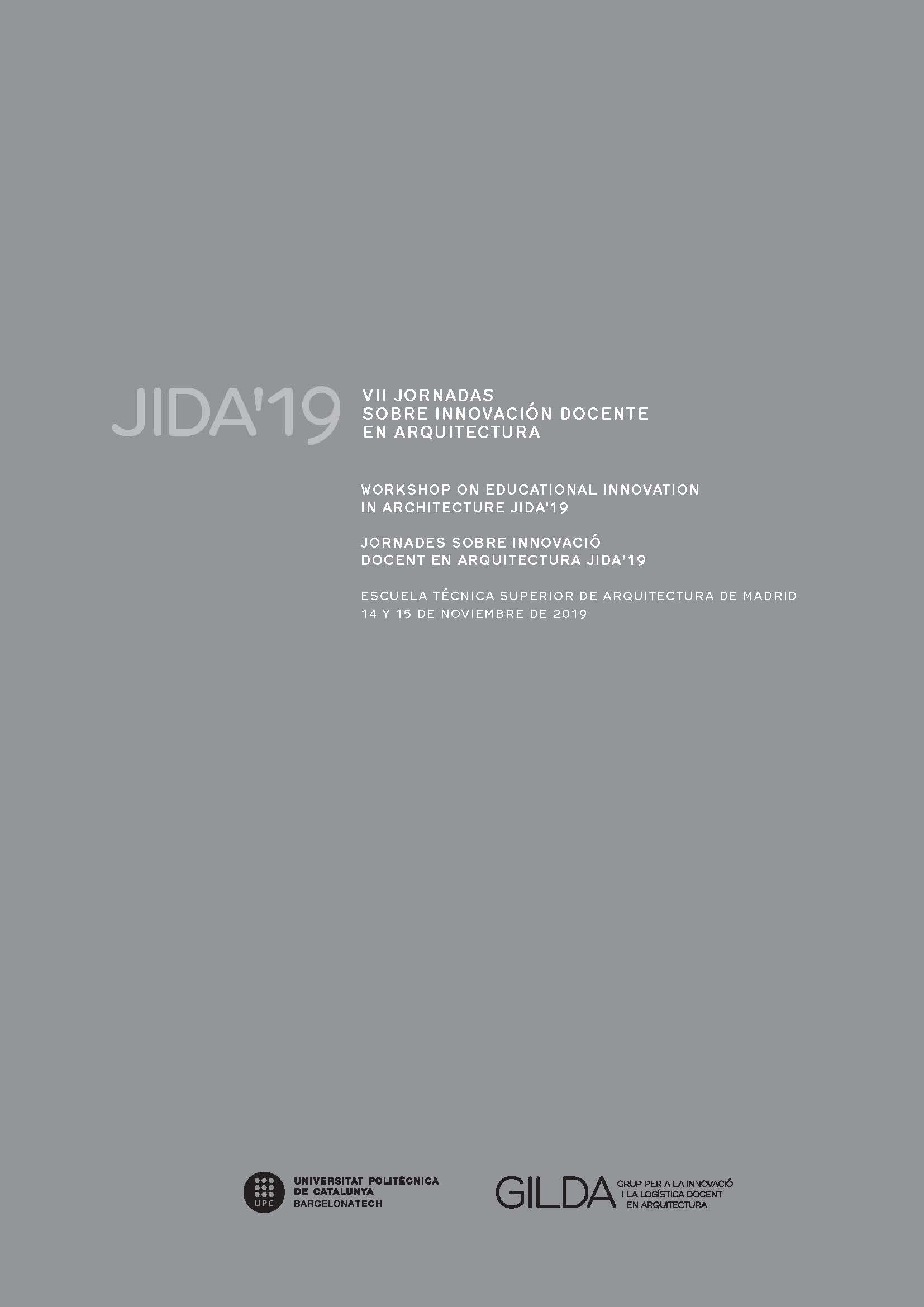Wikipedia as a resource for media architectural literacy
DOI:
https://doi.org/10.5821/jida.2019.8270Abstract
Digital media has become the main source of information for many architecture students, who use blogs, social networks, search engines ... to get information. However, given the huge amount of resources available, they are not always able to identify the highest quality sources or properly manage the obtained data. Using Wikipedia, one of these digital sources which is frequently used by the students, as the main tool, a training project which aims to provide them with the necessary architectural media and informational skills, is proposed. Through the analysis of the information about certain architectural references in this digital encyclopedia, it is intended that the student not only acquires a critical attitude towards his digital architectural environment but may also contribute to its improvement.
References
ALA-MUTKA, K. (2011). Mapping Digital Competence: Towards a Conceptual Understanding. Luxembourg: Publications Office of the European Union.
ALMONACID CANSECO, R. (2017). Innovación docente en Arquitectura para la generación millenial. En D. GARCÃA-ESCUDERO y B. BARDà i MILÀ (eds.). JIDA 4, textos de arquitectura, docencia e innovación. Barcelona: Iniciativa Digital Politècnica, p. 36-41.
AREA MOREIRA, M. y T. PESSOA (2012). "De lo sólido a lo lÃquido: Las nuevas alfabetizaciones ante los cambios culturales de la Web 2.0" en Comunicar. Revista CientÃfica de Comunicación y Educación, XIX, 38, p. 13-20.
BAUDRILLARD, J. (2009). La sociedad de consumo. Sus mitos, sus estructuras. Madrid: Siglo XXI de España Editores S.A.
BAWDEN, D. (2001). "Information and digital literacies: a review of concepts." en Journal of Documentation, 5, 2, p. 218-259.
BAWDEN, D. (2008). Origins and Concepts of Digital Literacy. En C. LANKSHEARC Y M. KNOBEL eds. Digital Literacies: Concepts, Policies, and Practices. New York: Peter Lang.
BENJAMIN, W. (2018). Tesis sobre el concepto de história. En W. BENJAMIN, J. IBÃÑEZ FANÉS, J. AGUIRRE Y R. BLATT eds. Iluminaciones. Móstoles (Madrid): Taurus, p. 307-318.
BLANCO AGÃœEIRA, S. (2016). "La organización y depuración de los contenidos online en tareas de investigación. MetodologÃa docente en el ámbito de la arquitectura" en Rita-Revista Indexada De Textos Academicos, 5, p. 80-83.
BOESIGER, W. et al. (Ed.). (1970). Le Corbusier: Complete Works in 8 Volumes. Zurich: Les Éditions d’Architecture.
CATTS, R. y J. LAU. (2008). Towards information literacy indicators. ParÃs: UNESCO.
CORNELLA, A. (2003). KNewton : buscando un orden en la información : 100 "leyes" para entender como podemos utilizar mejor la información en las organizaciones. Barcelona: Infonomia, Red de Innovadores, p. 133.
DENNING, P. et al. (2005). "Wikipedia Risks" en Communications of the ACM, 48, 12, p. 152.
DEVESA DEVESA, R. (2015). Difundir lo aprendido: razones y medios. En D. GARCÃA-ESCUDERO y B. BARDà MILÀ (eds.). III Jornadas sobre Innovación Docente en Arquitectura (JIDA’15), Escuela Técnica Superior de Arquitectura de Barcelona, del 25 al 29 de Mayo de 2015. Barcelona: UPC IDP; GILDA, p. 78-89.
GIEDION, S. (2009). Espacio, tiempo y arquitectura. Origen y desarrollo de una nueva tradición. Barcelona: Editorial Reverté.
GILSTER, P. (1997). Digital literacy. New York: Wiley.
GOODHOUSE, A. (ed.). (2017). When Is the Digital in Architecture? Berlin: Sternberg Press.
GRIZZLE, A. et al. (2013). Media and information literacy: policy and strategy guidelines. ParÃs: UNESCO.
LEE, A. Y. L. (2010). "Media Education: Definitions, Approaches and Development around the Globe" en New Horizons in Education, 58, 3, p. 1-13.
LEE, A. Y. L. y C. Y. K. SO. (2014). "Alfabetización mediática y alfabetización informacional: similitudes y diferencias" en Comunicar. Revista CientÃfica de Comunicación y Educación, XXI, 42, p. 137-146.
LINDQUIST, M. (2006). Web Based Collaboration (for Free). Using Wikis in Design Studios. En G.A. LUHAN, P. ANZALONE, M. CABRINHA y C. CLARKE (eds.). Synthetic Landscapes: Proceedings of the 25th Annual Conference of the Association for Computer-Aided Design in Architecture. Lexington: University of Kentucky, p. 190-199.
PRENSKY, M. (2001a). "Digital Natives, Digital Immigrants" en On the Horizon, 9, 5, October 2001, p. 1-6.
PRENSKY, M. (2001b). "Do They Really Think Differently?" en On the Horizon, 9, 6, December 2001.
QUETGLAS, J. (2008). Les Heures Claires proyecto y arquitectura en la Villa Savoye de Le Courbusier y Pierre Jeanneret. Sant Cugas del Vallès: Associació d'idees, p. 617.
SANTAMARINA-MACHO, C. (2017). Digital castaways in architectural education. En D. GARCÃA-ESCUDERO y B. BARDÃ-MILÀ (eds.). V Workshop on Educational Innovation in Architecture. p. 23-31.
SARTORI, G. (1998). Homo videns la sociedad teledirigida. Madrid: Taurus, p. 159.
WEST, J. A.; y M. L. WEST. (2009). Using wikis for online collaboration : the power of the read-write Web. San Francisco, CA: Jossey-Bass, xviii, p. 142.
WILSON, C. et al. (2011). Alfabetización mediática e informacional: curriculum para profesores. ParÃs: UNESCO.
ZEVI, B. (1948). Saber ver la arquitectura. Barcelona: Ediciones Apóstrofe, S.L., p. 222.
ZEVI, B. (1999). Leer, escribir, hablar arquitectura. Barcelona: Apóstrofe, p. 620.






















